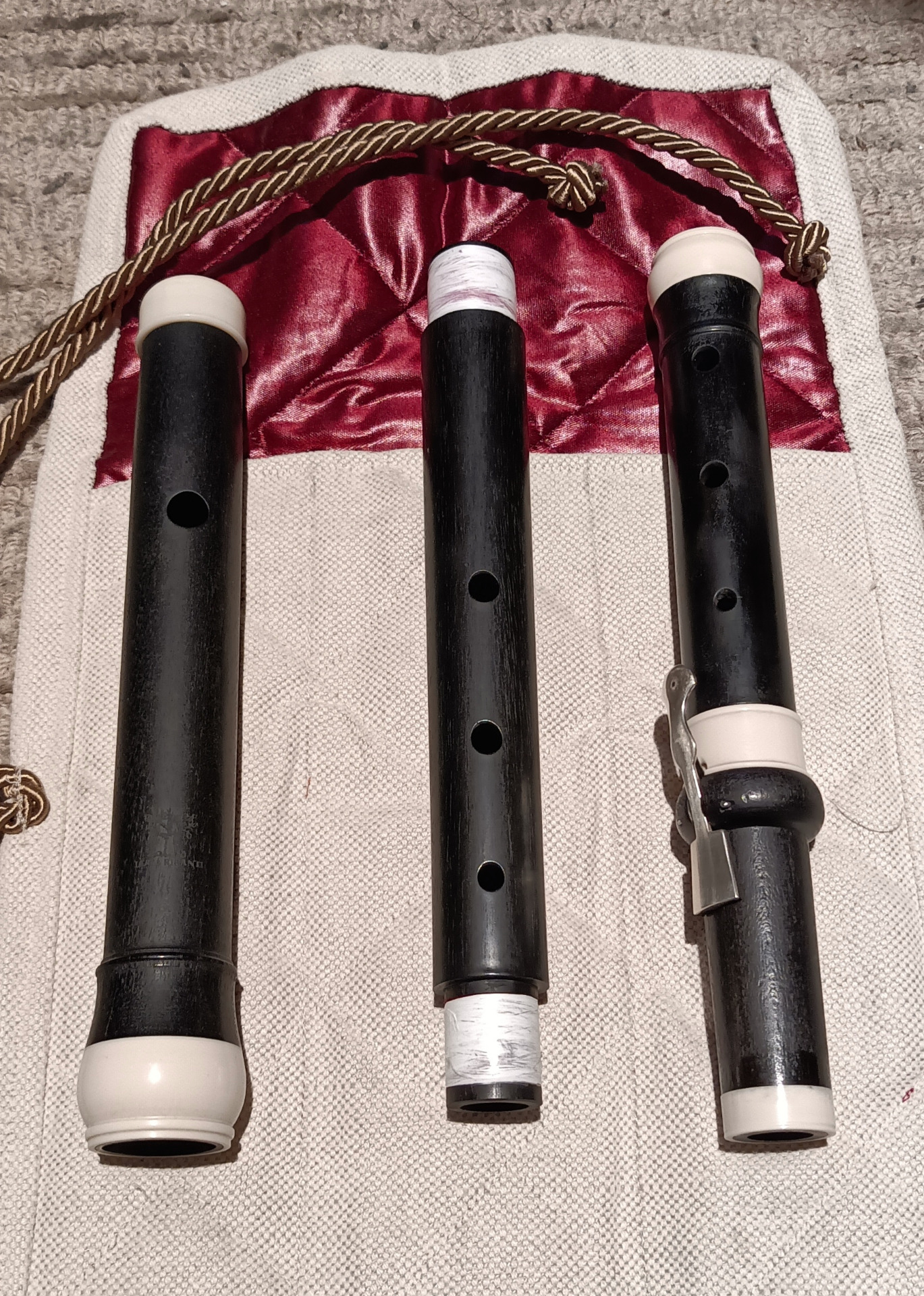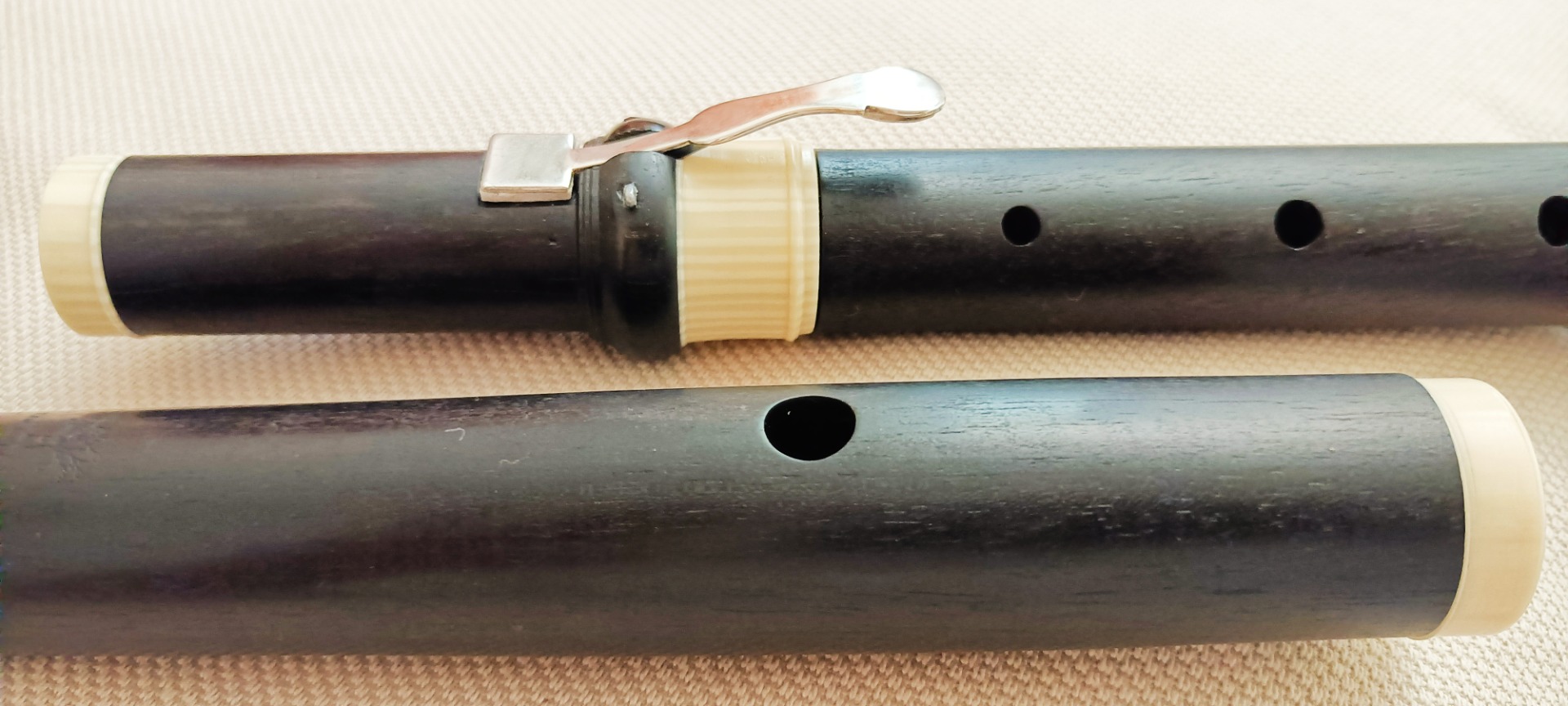Instruments
Carlo Alberto Felice Palanca is the 18th Century Italian maker whose largest number of wind instruments has survived, among which we can find traversos, recorders, oboes and bassoons. He was born in Palancato, a hamlet of the village of Boccioleto (Vercelli) in 1691, and died in Turin on December 23rd 1783. He was the son of Giovanni Lorenzo Pitteti, a flutist and flute maker (1645 circa - 1725) and brother of the two painters Angela Maria and Anna Maria Domenica. Like the rest of his family, he changed his last name in Palanca, after the name of his native hamlet, when he moved to Turin in 1696. He was also an excellent musician and was hired as a bassoon player by the Turin Royal Chapel in 1719.
His flutes are modeled in the late baroque fashion. They look quite sturdy and have an external diameter slightly larger than the average baroque flute. Normally the embouchure hole is moderately oval. The tone is somewhat intense but never inelegant. On the contrary it is quite mellow and rich, particularly in the slow movements. The instrument after which our copies are made belongs to a private collection in Frankfurt. It is available in boxwood, ebony or synthetic resin. It is an instrument especially suitable to perform Italian music, but also excellent for J.S. Bach and G.P. Telemann.
It is also possible to order a model inspired by an instrument belonging to the collection of the Turin Conservatoire, with full ivory molding and taller cylindrical head-joint cork plug cover. It has the same acoustic features of the Frankfurt model though, since the original has been heavily modified, likely during the XIX Century.
The Palanca traverso is available with either baroque pitch A=415 Hz or with a corps de rechange for modern pitch A=440 Hz, or both.
Making copies of flutes of this great artist in the very same city where he created his own instruments more than two centuries ago, is a honor, a responsibility, but also a great personal satisfaction.
Godfried-Adrian Rottenburgh (Brussels 1703-1768)
G.A. Rottenburgh, also know as "Rottenburgh the son" to distinguish him from his father Joannes Hyacynthus Rottenburgh, also an instrument maker in Brussels, built one of the most versatile and satisfying flute one can happen to play. It is suitable to perform all of the late baroque and classical repertoire. Most of the copies are made after the original model owned by Barthold Kuijken, as well as after the other specimens kept in the beautiful Museum of Musical Instruments of the same city. Its wonderful sound qualities earned it the title of "Stradivarius of the flutes". It is available in boxwood, ebony or synthetic resin.
The instrument is available with either baroque pitch A=415 Hz or with a corps de rechange for modern pitch A=440 Hz, or both.
Karl August Grenser (1720-1807)
Working in Dresden since 1744, K.A. Grenser - later joined by his nephew Johann Henrich Grenser (1764-1813) - is without doubt one of the most celebrated flute makers of the late Baroque and Classical era.
During the approximately 50 years of activity his models varied in several features, both aestethic and technical: the shape of the embouchure hole (round or oval), mouldings, and the materials he used, but in general all of them stand out for their bright and crisp tone, and for a ready and precise articulation. Karl August and his nephew Johann Henrich made further changes to their instruments, adding over time extra keys (up to eight), developing the baroque flute into the late classical and romantic model.
The proposed instrument is made after an original flute by K.A. Grenser dated around 1790. It is particularly suitable for the late Baroque and Classical repertoire, especially for Mozart, Haydn, C.P.E. Bach etc. Its pitch is A=415 Hz and it can be made in ebony, boxwood or synthetic resin. The models in the pictures are in ebony and boxwood, not varnished.
























